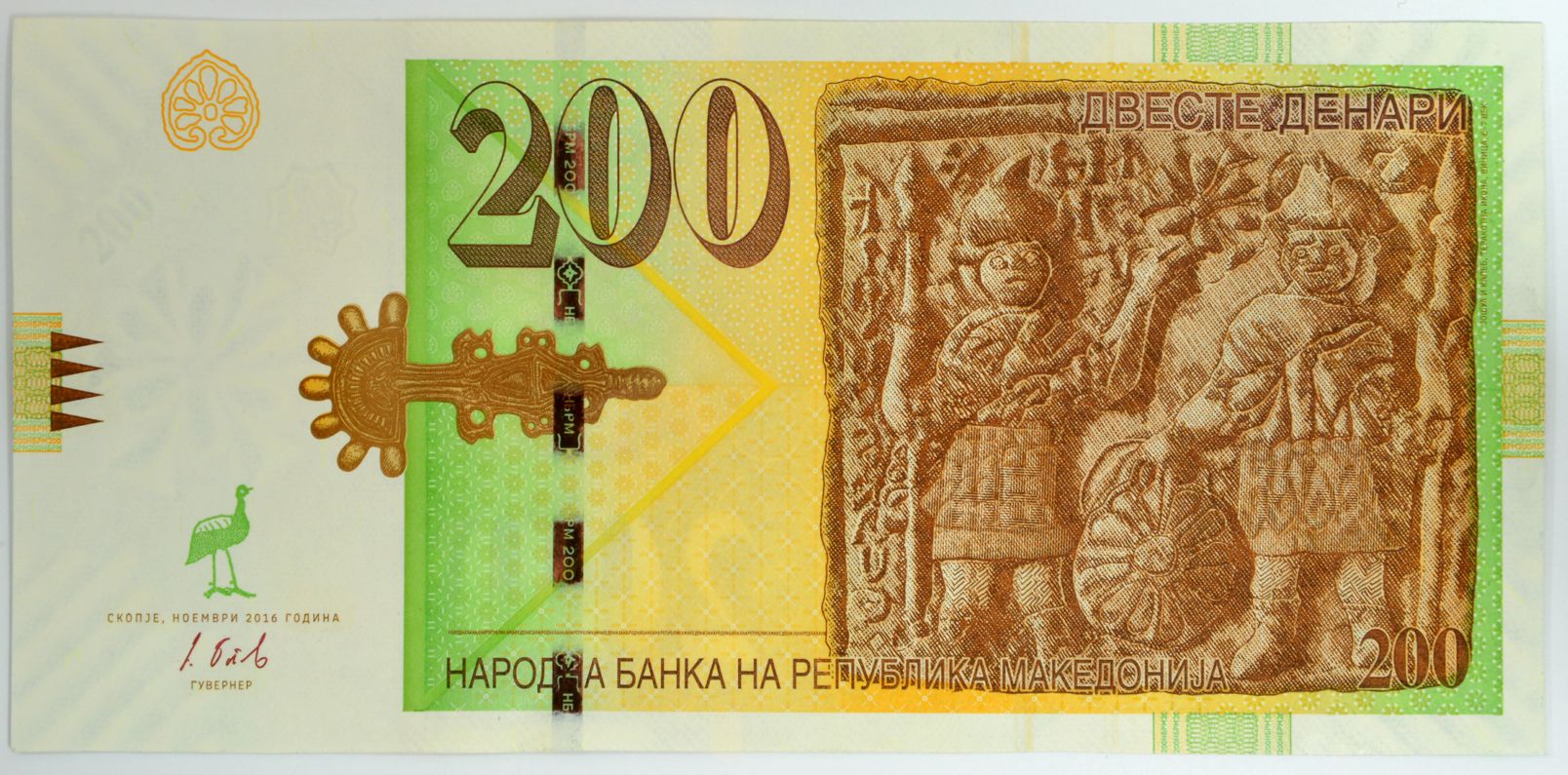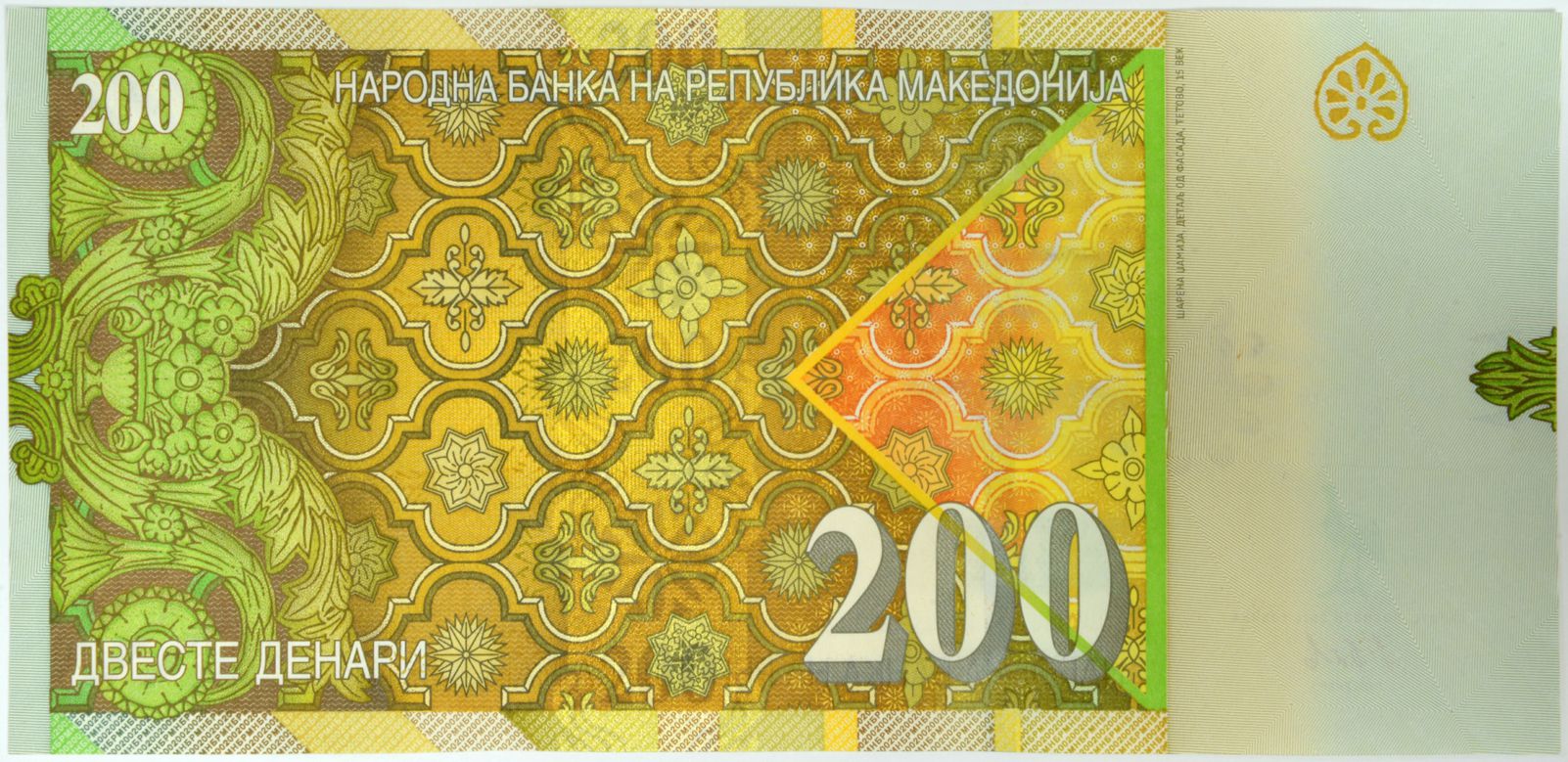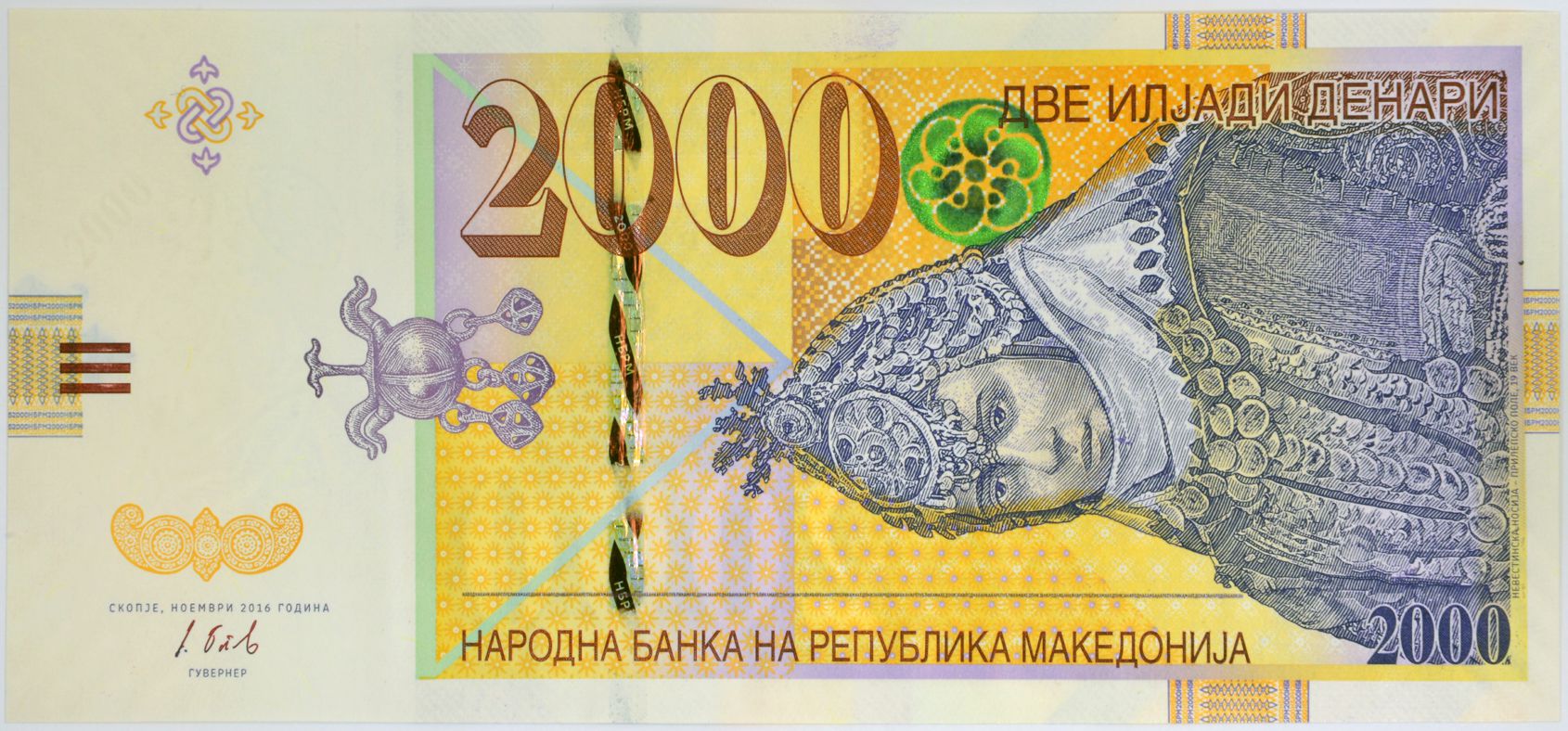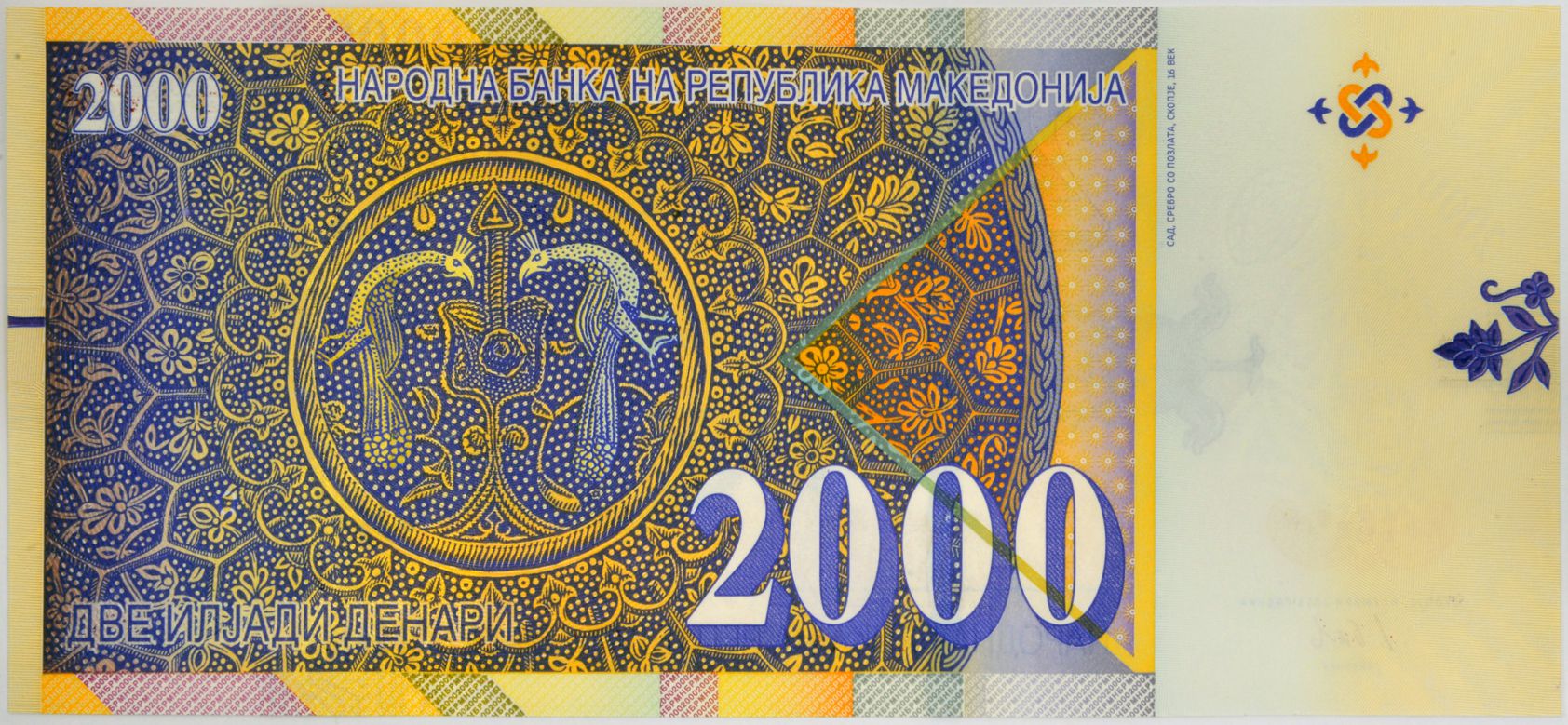|
1. Obverse of the 200 denar banknote:
Leitmotif of the obverse of the 200 denar banknote is the representative Christian terracotta icon, i.e. the relief depictions of the Old-Testament warriors Joshua (Jesus Navin) and Caleb dating from the 6-7th century belong to the famous group of terracotta icons from Vinica. These icons are one of the most important archaeological discoveries on the territory of the Republic of North Macedonia.

Description of the icon:The figure of Joshua in a frontal position is presented on the left side of the relief with dimensions 28,5x30x4cm. He is dressed in military clothes, wearing a helmet on his head adorned with two horns, holding a spear in his right hand and showing towards the sun in the upper central part of the plate with his left hand. Over Joshua’s head, between his helmet and spear, a star is presented. Caleb’s figure in a frontal position is presented in the right half of the plate. Similar as Joshua, he also wears military clothes, holding a spear in his left hand and holding the shield that is placed between him and the figure of the other warrior in his right hand. Caleb’s face is slightly turned to the right, and his gaze is fixed on the sun that Joshua is showing. A presentation of the moon is shown over his head.
Along the left vertical edge of the plate, left of the figure of Joshua, the text FILIUS NAVE is written with upside down letters. In the upper middle part of the relief, between the head of Joshua and the Sun, his name is inscribed in three rows. In the first row, the letter H is written beside the symbol of the cross. In the second row the letters IE, and in the third row letters SU are written. Along the right vertical edge of the play, the name KALEEB is inscribed next to his figure.
The meaning of the Performance:This scene depicting images of the soldiers-heroes Joshua and Caleb, illustrates an episode from the Old Testament (The Book of Joshua), showing the moment when he stops the Sun over Gibeon and the moon over the valley of Aijalon, before the great victory of the Israelites over the Amorites (The Book of Joshua 10:12,13).Heroic events in the story of Joshua represent the events of the New Testament history of early Christianity. Starting from the period of life of the apostle Paul, the character of Joshua represents an Old Testament reshaping of the supreme god of the Christian religion, and further, from the 4th and 5th century, in the context of the historical development of the theological thought, many Christian theologians and writers, considering the Old Testament as a book that refers to the eternal existence of Jesus Christ, and because of the similarity of the name and the crucial acts, consider Joshua as an Old Testament prefiguration of Jesus Christ.
On the same side, in the left center field, there is a representation of an early medieval bow bronze fibula, found near Prilep. The fibula itself dates to around the beginning of the seventh century.
1a. Reverse of the 200 denar banknote:

Leitmotif of the reverse of the 200 denar banknote shall be an architectural art element of the front facade of the Šarena (Aladža) Džamija in Tetovo, one of the most attractive monuments of architecture and art from the Ottoman period in the Republic of North Macedonia. It is believed that the mosque is built in the 15th century. The design is complemented by floral elements taken from the decoration of the marble floor tiles of the famous Ishak Çelebi Mosque in Bitola, built at the beginning of the 16th century.
|
|
2. Obverse of the 2000 denar banknote:
Leitmotif of the obverse of the 2000 denar banknote is the presentation of Macedonian bridal costume from Prilep Field as a striking reflection of the richness of the folklore heritage of the Republic of Notrh Macedonia. On the same side, in the left center field, there is a presentation of a pendant in form of poppy cup which shall represent an artifact dated in the 7th century BC, belonging to the famous group of Paeonian-Macedonian bronzes.

2a. Reverse of the 2000 denar banknote:
Leitmotif of the reverse of the 2000 denar banknote is the decoration of the inside of a gilded vessel, which originates from the 16th century and whose central field shows two affronted peacocks (birds of paradise) near the "source of life" surrounded by lavish floral decoration.

|